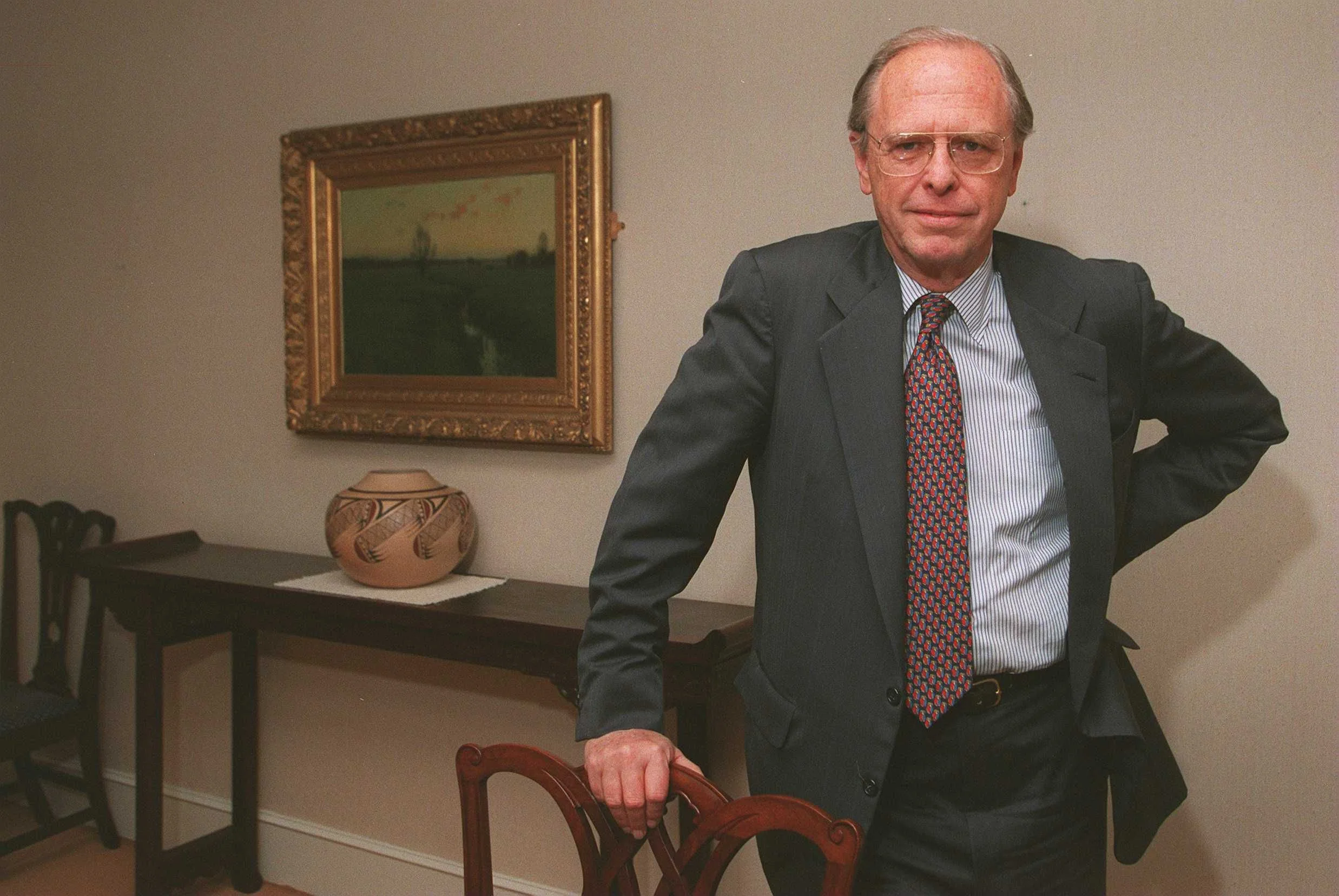VTSAX - World’s Greatest Index Fund
There are over 10,000 mutual funds available to investors in the United States. However, of all the mutual funds out there, there is one that stands out among all of them. The Vanguard Total Stock Market Index Fund or more simply known as VTSAX. It is by far the largest fund in the world with assets under management of over $1 trillion dollars, and it is my personal favorite index fund.
And if I can dare to say it, I personally believe it is the world’s greatest index fund to grow your wealth. In this post I’m going to deep dive into VTSAX. What it is and why I believe it is one and only fund you need for your wealth building.
Why Index Fund
However, before we get into the specifics of VTSAX, let’s talk briefly about index funds first. Because when you understand index funds, you will also understand the benefits of a fund like VTSAX. Index funds are distinct from the average mutual fund. Most mutual funds try to pick stocks that will result in the highest investment return.
Unfortunately, because there are millions of investors with the same goal, stocks that are publicly traded tend to be priced correctly and very few actively-managed mutual funds outperform the total stock market over time. Index funds don't attempt to outperform the market; they merely replicate a benchmark stock portfolio or index. And they therefore provide several clear benefits to investors:
Diversification
First major benefit to investing in index funds is diversification. With index funds such as VTSAX, you are able to get investment exposure to over 4,000 companies. This means that your portfolio returns aren’t significantly affected by the poor performance of a single company. By spreading your money across thousands of companies, your investment returns are significantly less volatile and your portfolio less risky than if you only held 1 stock or even 100 stocks.
Simplicity
The second benefit to investing in index funds is simplicity. Can you imagine trying to create your own diversified portfolio of 4,000 companies? Not only do you need to identify them in the first place, you need to individually buy and sell them. Then as the stock market shifts with new companies and bankruptcies, you’ll need to reflect them as well with constant buying and selling. It would not only be cumbersome, but nearly impossible.
But Vanguard and other investment firms offering index funds have made it incredibly easy to get the same investment returns as holding a portfolio of thousands of stocks. Through their index funds, they offer investments that give investors the exposure of holding thousands of stocks in a single investment product. Getting the benefits of diversification across thousands of stocks doesn’t get any easier than buying a single index fund.
Self Cleansing
The third benefit to investing in index funds is the concept called self-cleansing. It means that the fund automatically recycles bankrupt companies while at the same time retaining those that are continuously creating value for its customer. No fund manager is doing this. This is just a natural byproduct of holding an index fund of all publicly traded companies based on market capitalization.
And stocks have unlimited potential to go up. Just look at a company like Apple. In the last 40 years, since 1982, the stock increased in value by 230,000%. However, how many of us can honestly say that if we were looking at Apple 40 years ago, we’d know it would have become the company that it is today. Not many of us. But when you hold onto a good broad market index fund, you naturally get the upside of growing companies like Apple. And on the downside, you are protected because the lowest a company can go is $0. It can’t fall any further. When a company fails, it will go bankrupt and disappear essentially making its stock price $0. But there are always hundreds of new companies coming in to take the reign. Companies that could also one day be the new Apple.
Cost
The fourth benefit to investing in index funds is its low cost. Now this isn’t true for all index funds since I’ve seen index funds that charge too much, however in general index funds are the lowest-cost mutual funds available to investors. Index funds most often charge one tenth the cost of the fees of the typical actively-managed fund.
This is because the primary costs of running an index fund are much simpler than for actively managed mutual funds. The fund is simply tracking an index, therefore most of the operation is automated and predictable. Vanguard Total Stock Market Index Fund has an expense ratio of 0.04%. What this means is that if you have $10,000 invested in VTSAX you are essentially paying Vanguard $4 annually to manage its fund for you.
Actively managed funds on the other hand have to pay expensive staff to research stocks. And often very expensive at that given fund managers and analysts are needing to meet with company executives, spend countless hours reviewing company financials and identify the next hot stock for their funds. Sadly, all these bee hives of activity most often lead to underperformance making index funds the best ways to invest in the market.
Why VTSAX
Now let’s talk specifically about Vanguard Total Stock Market Index Fund and why I personally believe even of all index funds, VTSAX is the best of them all.
CRSP US Total Market Index - The Most Diverse Index
The first reason I think it is so great is the index that it tracks. VTSAX tracks the CRSP US Total Market Index, which aims to replicate the entire U.S. total stock market, including large-cap, mid-cap, small-cap, and micro-cap stocks.
Everyone’s probably heard of the Dow Jones Industrial Average or the S&P 500. However, CRSP US Total Market Index isn’t as widely known. However, this unknown index actually represents more stocks than the Dow Jones and the S&P 500 and is probably the best reflection of the entire US stock market at a single point in time.
Let’s discuss the CRSP Index briefly. It was designed by the Center for Research in Security Prices, or CRSP, a subsidiary of the University of Chicago’s business school. One reason the CRSP index is relatively unknown among the general public is that it was built at Vanguard’s request only a decade ago from a monthly research tool for academics into its current form as an investable index.
Because the CRSP index consists of more than 4,000 stocks—including everything from tiny stocks to blue-chip giants—it shows how the entire market is doing. By comparison, the Dow Jones Industrial Average tracks just 30 big-name stocks and the S&P 500 follows the performance of 500 largest companies.
Now there are other total market indexes in the market. The other popular ones being the Dow Jones U.S. Total Stock Market Index or the MSCI US Broad Market Index. Fidelity Total Market Index Fund, the FSKAX and Schwab Total Stock Market Index Fund, the SWTSX both track the Dow Jones US Total Stock Market Index as its index.
However, Dow Jones U.S. Total Market Index represents the top 95% of the U.S. stock market based on market capitalization whereas CRSP US Total Market Index, represents approximately 100% of the investable U.S. stock market.
With that said, I’ll be honest, the difference between all these total market indexes are quite minimal. Because of the market cap, the actualy difference between CRSP US Total Market Index and Dow Jones U.S. Total Market Index is like splitting pennies. However, from a psychological perspective I still like the idea of being invested with an index that is the most broad representation of the market.
Vanguard - Company Structure
Which leads us to the second reason and in my opinion the best reasons to invest with VTSAX. Vanguard’s unique company structure. When Mr. Jack Bogle founded Vanguard in 1975, it set it up with a very unique structure. A structure that is so different that it continues to remain unique in the investment world till today.
Vanguard is by design client-owned and it operated at-cost. This means that when you choose to purchase a fund from Vanguard, you not only are its customer, you are also its owner. Most other investment companies are set up differently. They are structured to serve two separate masters - the company owners and the investors in their funds, their customers.
Fidelity for example is a private company owned by the founding Johnson family, employees and ex-employees. Fidelity exists to provide quality service to its investors, however, it must also provide healthy profit for its owners; the Johnson family, Fidelity employees and its ex-employees.
If there is tension between the two groups because the market isn’t doing well and profits are low, who do you think will pay the cost to raise profits? Charles Schwab is a publicly traded company so it's owned by individuals who own its stock. Similarly, individuals who own the stock expect good returns on their investment.
Charles Schwab needs to provide quality service to its customers / investors to keep them happy, but at the end of the day, if pressure is on to raise profit, who do you think will pay the cost? A publicly traded company is pressured to generate profit. And it most often will do that at the expense of its customers / investors.
It’s the same story with BlackRock, the world's largest asset manager, with US$10 trillion in assets under management. A major public company with shareholders as its owners. And the same with State Street, the world's fourth largest asset manager, with nearly $3.6 trillion in assets under management.
This is where Vanguard is very unique in the investment world. Mr. Jack Bogle shifted the ownership of Vanguard to the mutual funds it operates. And since the investors own those funds through the ownership of shares within them, the investors - you and I in effect own Vanguard when we invest with them.
And because the company is client-owned, it would only make sense that Vanguard operates its funds “at-cost,” the minimum fees needed to cover the costs of operations of the funds - nothing more. Vanguard is inherently structured to provide the lowest possible fee to its customers as possible, because they are also its owners. Your interest as the investor and the interests of Vanguard are exactly the same.
What I find most fascinating about this notion is how Mr. Jack Bogle has financially benefited from this arrangement. Yes, Vanguard’s consistent growth as a company the last 5 decades have produced riches for Mr. Bogle. But not to the extent that another ownership structure might have done. For example, Edward C. Johnson III, the former chairman of Fidelity Investments, had a net worth of $8.2 billion at the time of his death in 2021. Mr. Bogle’s net worth on the other hand was generally estimated at $80 million at the time of his death in 2019.
Edward C. Johnson III, Former Chairman of Fidelity (Net Worth: $8.2 Billion)
Jack Bogle, Founder of Vanguard (Net Worth: $80 Million)
Both heads of major investment firms, but vastly different net worths at the time of their death. I like to believe that Mr. Jack Bogle’s lower net worth has to do with the fact that his focus was more on generating more money for his customers than his own pocket. Though I admit, $80 million is not small pocket change.
VTSAX vs. VFIAX
Alright, with that said, let’s cover some commonly asked questions regarding VTSAX. What is the difference between VTSAX and VFIAX, the Vanguard 500 Index Fund? The original index fund initially introduced in 1975?
Compared to VTSAX, VFIAX tracks the S&P 500 representing the 500 largest publicly traded companies in the US. However, VTSAX and VFIAX are actually quite similar. The S&P 500 and total stock market index has a very high correlation. Long-term correlation of 99% between the two of them. This is because around 80% of the total stock market index contains large-cap stocks such as those in the S&P 500.
While both options are excellent index funds, VTSAX, with its exposure to mid-cap and small-cap stocks, is slightly more diversified than the large-cap heavy VFIAX. VFIAX is Vanguard’s oldest fund and because the S&P 500 remains the standard to which professional mutual fund managers and investment firms compare their returns against, many people prefer VFIAX vs. VTSAX as their core equities holding.
VTSAX vs. VTI
The next most common question I get regarding VTSAX is how about VTI? How does that compare to VTSAX? There are essentially two ways to purchase a total stock market index fund at Vanguard. One through the index fund, the VTSAX, and the other through its ETF equivalent, the VTI. VTSAX is Vanguard’s Admiral share class for the total stock market. The Admiral share class has an expense ratio of 0.04% and a minimum investment of $3,000.
If you do not have $3,000 to invest in the Admiral Shares, then you can invest in the Vanguard Total Stock Market ETF, VTI. It not only doesn’t require a minimum but has a slightly lower expense ratio of 0.03%.
I won’t go into all the details of an ETF in this post but the main difference between an ETF and an index fund is that the ETFs can be traded during the day and index funds can only be traded at the set price point at the end of the trading day. Now I personally believe if you are a buy and hold investor you don’t need to bother with an ETF, but honestly you can’t go wrong with either.
VTSAX Alternatives
Alright, another common question I get is what if I can’t buy VTSAX. Or you want to stay with other investment firms like Fidelity or Schwab because you’ve been doing business with them for many years. What are my options?
VTSAX is the best option for total stock market index investing at Vanguard, but there may be fees associated with buying Vanguard mutual funds such as VTSAX at other brokerages such as Fidelity or Schwab. So let me share with you some excellent alternatives to VTSAX at these investment firms.
If you are invested with Fidelity, you actually have two options. The Fidelity Total Stock Market Index Fund, FSKAX and Fidelity ZERO Total Stock Market Index Fund, FZROX. FSKAX has been around much longer and has very similar returns to VTSAX. It also has a slightly lower expense ratio than VTSAX at 0.015% and tracks the Dow Jones US Total Stock Market Index.
FZROX is the new kid on the block and made big news when they offered the first mutual funds with a 0.00% expense ratio. Few caveats to note regarding FZROX is that it follows Fidelity’s in-house proprietary total stock market index and it is only available to Fidelity customers. It also has some limitations with portability - meaning transfers to other investment firms. But if you are a life-long Fidelity customer this shouldn’t be a problem.
If you are invested with Charles Schwab Schwab Total Stock Market Index Fund, also known as SWTSX is your best option. It has a low expense ratio of 0.03% that is very competitive to Vanguard’s VTSAX, and is most appropriate for Schwab investors looking for a total stock market index option for their retirement accounts.
Vanguard Total Stock Market Index Fund is the largest index fund in the world and I personally believe the greatest if I can use that term. It is one of the most well-run index funds in the world and has provided millions, if not tens of millions of investors with simple, low-cost diversification to the entire U.S. stock market. I personally believe all investors should use it as the centerpiece of their portfolios to grow their wealth.



